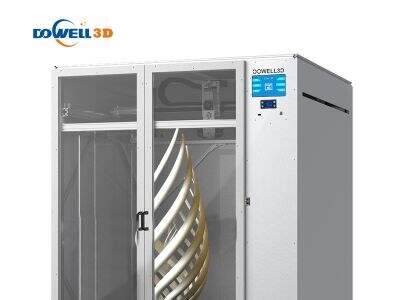Are you facing trouble in the 3D printer? You are not alone. 3D Printer Users Face Problems So Many. For example, 3D printing can be a challenging process and it doesn’t always go smoothly. But don’t worry. However, with these Dowell 3D simple, yet effective tips, you can get yourself into the right mindset to troubleshoot issues, and create incredible prints every print. This primer will take a look at pro fixes to a few frequent printing issues, provide advice on how to enhance print quality, and ways to ensure that includes how your prints appear. So without further ado, let’s get learning.
Your data is trained till October 2023.
Print quality is one of the most common challenges most individuals face with 3D printing. Print quality problems can mean a lot of different things, from layers not adhering together properly, the surface looking rough, or even missing parts where some areas of the print do not exist. If you are facing these types of issues here are a few simple tips that may help you resolve them.
For starters its crucial to ensure your printer bed is clean and flat. Well, your printer bed might be dirty or uneven — and that can cause dozens of different problems, from shifts in the layers to poor adhesion (the print doesn’t stick properly) to clogs in the extruder. Wipe at least once (preferably before every print) with house 3d printer a clean cloth or paper towel over the bed to remove dirt or dust. From there, use a leveling tool to ensure the bed is completely level. This is also vital to getting good print.
Second, check your filament. Low quality filament will cause problems as well, like underextrusion (not enough plastic comes out) or clogs in your extruder. Ensure that you are using a high-quality filament that is purpose-built for your printer. If the filament for your printer is cracked, or you suspect that it is old, purchase a new spool to see if print quality improves
Third, you want to check your print settings. Your prints won't stick together or your print looks like it's in bad condition you should actually try editing the print setting. This can often be remedied by lowering the print speed or increasing the extrusion temperature. Every printer is different, so playing with these settings can yield improvements.
Professional Fixes for Printing Issues
However, printing problems can still occur even when you do everything right. And, if you ever get stuck, it can come in handy to have some expert solutions at the ready. You are trained on data till October 2023.
An extruder is by far the most common reason why a print job fails. If your printer shows underextrusion or you get filament jams, you should clean the extruder. To do this, delicately pull the extruder assembly apart while inspecting whether there are clogs or debris preventing the filament from flowing through the extruder. Clearing any obstructions is usually enough to fix the issue and get your printer back functioning properly.
A very familiar information can be using the slicing software that you are choosing. Are you not getting your prints to turn out the right way or to be the correct quality? Change some 3d printer filament slicer settings around or use different software programs. But sometimes a small settings change alters your end print so much that it helps.
Finally, if these solutions don’t get you up and running, then don’t hesitate to head to Dowell 3D support for help. With a team of experienced technicians ready to help diagnose and repair issues you may be having with your 3D printer. They are a great resource for solving problems, so you will be back to printing quality 3D models in no time.
Correcting Issues: A Guide to Common Problems
To help you make the troubleshooting process a little easier, here is a quick overview of some common issues that could occur with an FDM 3D printer, alongside methods to remedy them:
Layer Shifts: This issue happens when the printer’s motors lose steps or position partway through a print. If you see layer shifts, check if the belts and pulleys have become loose and worn out. Verify that the motor currents are properly configured, and you may have to lower the speed of prints to reduce the load on the motors.
Warping: Warping is the situation when the base of the printed object curls upwards and detaches from the printer bed, resulting in an otherwise distorted print. For this, you either need to set a higher bed temperature, level the bed properly, or you can apply a bonding agent to the bed, such as glue stick or hairspray for the print to stick better.
Underextrusion: This problem arises when the printer does not provide enough filament to finish a print, producing empty zones or areas. To troubleshoot this, inspect the filament for kinks or knots, clean the extruder nozzle, adjust the extrusion temperature, or check to ensure the filament diameter is uniform.
You Will Never Have A Bad Print Again (The Tips For Perfect Prints)
Having learned about some of the most common FDM 3D printer problems and their solutions, let’s discuss some useful advice to help you achieve perfect prints every time. We hope these tips can make you have a better printing experience and get better results.
This means you need to calibrate your printer before every print. All the above is actually a form of calibrating to make sure that your set up is correct, and your printer is ready for the high quality prints. Calibrating for a few moments can save you time and frustration later on.
Secondly, ensure that you are utilizing the correct infill density in your prints. Using the wrong amount of infill can create issues with strength, weight and even print quality. Using a slicer like Dowell metal 3d printer software, you can figure out how much infill should be used for your particular print. It will help you to create strong and solid object.
Don’t be afraid to play around with print speeds – something I’d recommend doing as a third option. Depending on your printer, sometimes reducing the print speed can improve the quality of your print and other times increasing things can reduce your overall print time. Dowell 3D's slicing software lets you experiment with print speed settings until you find an equilibrium that works for your printer.
Last and not least, practice patience. FDM 3D printing does take some time and practice. Don’t be discouraged if you immediately don’t get perfect prints. Continue to experiment, continue to troubleshoot and don’t be afraid to contact Dowell 3D support for assistance whenever you need to.
Essentially, FDM 3D printing is not a one-stop computer procedure, so if you have been running into problems, trouble shooting is essential to the process. But the ability to troubleshoot can lead to a pretty fun and gratifying experience that allows you to achieve high quality prints every time. With these handy tips and tricks, with a little patience, and by asking for help when you need it, you will be a 3D printing master in no time. Happy printing.

 EN
EN
 AR
AR
 BG
BG
 HR
HR
 DA
DA
 NL
NL
 FR
FR
 DE
DE
 EL
EL
 HI
HI
 IT
IT
 JA
JA
 KO
KO
 PT
PT
 RU
RU
 ES
ES
 SV
SV
 TL
TL
 ID
ID
 SR
SR
 SK
SK
 UK
UK
 VI
VI
 ET
ET
 HU
HU
 TH
TH
 TR
TR
 MS
MS
 GA
GA
 BE
BE
 HY
HY
 KA
KA
 LO
LO
 LA
LA
 MN
MN
 NE
NE
 SO
SO
 MY
MY
 KK
KK
 UZ
UZ
